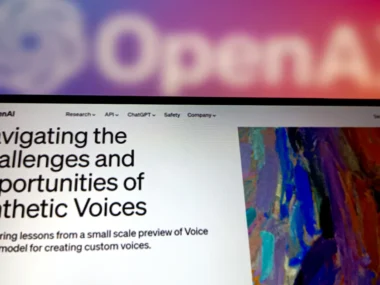Everything hinges on the job market.
President Donald Trump’s bold policy actions—and the unpredictability that followed—have made economic forecasting increasingly difficult.
This uncertainty has rattled financial markets and pushed sentiment-based data, like consumer confidence surveys, into concerning territory. Now, even traditional economic indicators are beginning to show signs of strain.
Trump’s aggressive tariffs and trade conflicts have raised the chances of a recession.
“Let’s not kid ourselves—things will likely get worse later this year, possibly by summer,” said Robert Frick, an economist at Navy Federal Credit Union. “For now, we have to hope that wages and employment stay steady, as they’re our main buffer.”
The American consumer drives over two-thirds of the U.S. economy, and their spending is closely tied to one major factor: the labor market. At present, and likely in April, that foundation hasn’t collapsed—but stress is becoming more evident.
“The numbers still show strength—jobs are growing and unemployment remains low,” said Elizabeth Renter, senior economist at NerdWallet. “But what the data misses is the rising risk. The threats to the job market and overall economy are significantly higher now than a few months ago.”
The Bureau of Labor Statistics is set to release April’s job report on Friday. Economists surveyed by FactSet predict 135,000 new jobs and an unchanged unemployment rate of 4.2%.
Challenges Facing the U.S. Economy are Intensifying.
If April’s job numbers meet expectations, it would signal a sharp slowdown from March’s preliminary gain of 228,000 jobs—a figure likely to be revised downward, especially after earlier data reduced January and February’s total by 48,000 jobs.
So far in 2025, job growth has averaged 152,000 per month—the weakest first-quarter pace since the pandemic hit in 2020, and before that, since 2011, according to BLS data.
“The same challenges we saw before March haven’t eased—if anything, they’ve intensified,” said Dean Baker, senior economist at the Center for Economic Policy Research.
In March, the effects of new tariffs had already begun to hit: a 20% duty on Chinese goods and a global 25% tariff on steel and aluminum imports. The Trump administration also enacted a federal hiring freeze, eliminated agency roles, and canceled major grants and contracts.
While unemployment claims haven’t spiked yet, both business and consumer sentiment have dropped sharply in recent months—suggesting a chilling effect on hiring, Baker noted.
April brought even more uncertainty. Tariffs increased significantly: Chinese imports faced 145% duties, a 10% base tariff was applied across all imports, and cars were hit with a 25% tariff. Additional tariffs on other countries were announced and then postponed. Federal spending cuts and aggressive immigration enforcement also persisted.
The latest labor data shows employers pulling back. Job openings in March dropped to their lowest since September, a period marked by election-related hiring hesitations.
Some experts believe the slowdown will be clear in the next jobs report. Lydia Boussour, senior economist at EY-Parthenon, predicts job gains as low as 65,000 for April.
“Layoff data hasn’t spiked, but announcements from firms suggest a steady rise,” Boussour said. “Business surveys also show the labor market is weakening.”
She added that April’s numbers might be further weighed down by timing: the survey was conducted just after the April 2 tariff announcement, amid peak volatility. Seasonal adjustments, especially in services, may drag the report down further if spring hiring was already limited by economic uncertainty.
The DOGE Effect
While the impact of tariffs and immigration-related measures may take longer to appear in the data, federal workforce reductions are already evident. The government sector has experienced job losses for two consecutive months, with a decline of 11,000 jobs in February and 4,000 jobs in March, according to BLS data.
Further losses are anticipated, though they will likely occur over several months. Although nearly 300,000 job cuts have been announced, not all federal workers were laid off immediately, meaning the effects on the labor market and unemployment will unfold gradually.
Government layoffs have represented the largest portion of job cuts this year, rising 680% compared to the same period last year. The Department of Government Efficiency’s cost-cutting measures have led to 281,452 layoffs, as per recent data from Challenger, Gray & Christmas.
In April, U.S. employers announced plans to cut 105,441 jobs, a significant increase from the 64,789 job cuts announced last year. A major portion of this, about 40,000 jobs, can be attributed to two large employers—UPS and Intel. UPS plans to reduce 20,000 jobs this year as part of its strategy to increase automation and cut back on its Amazon business. Intel, which has also announced 20,000 job cuts, has not yet detailed the specifics of these layoffs.
Despite the noise around government cuts, there is a clear trend of economic uncertainty impacting businesses. “While government layoffs are in the spotlight, we also saw cuts across various sectors,” said Andrew Challenger, senior vice president at Challenger, Gray & Christmas. “Companies are citing the economy and technological advancements as factors, with employers being cautious in hiring while they wait to see the effects of trade, supply chain, and consumer spending shifts.”
Weekly jobless claims, a common proxy for layoffs, remain near pre-pandemic levels and below historic averages, despite growing uncertainty and an increase in layoff announcements. Although the claims data is volatile and subject to revision, it’s becoming a critical indicator of how Trump’s policies, including mass federal layoffs, are influencing the broader economy.
Last week, initial claims for unemployment insurance surged to their highest point since late February, reaching 241,000 for the week ending April 26, an 18,000 increase from the previous week. Additionally, continuing claims, which reflect those receiving at least a week of jobless benefits, rose by 83,000 to 1.916 million, marking the highest level since November 2021.
Areas and metrics to watch in Friday’s report
Health care, state and local government, and leisure and hospitality have been key contributors to job growth in recent years. Health care is expected to maintain its lead in job creation, although at a slower pace.
A decline in state and local government hiring could signal the negative effects of federal spending cuts. At the same time, these sectors have been filling vacant positions with workers laid off from the federal government.
“State and local governments often serve as safety nets, so observing their employment stability can be helpful in assessing the economy, especially if we enter a recession,” said Elise Gould, senior economist at the Economic Policy Institute.
In addition to seasonal adjustments, slow job growth or losses in leisure and hospitality may reflect reduced discretionary spending by cautious consumers.
Hours Worked: A decrease in the average workweek could signal future issues. Gould explained, “Are workers getting fewer hours? Are their shifts being cut? Employers may not be laying off workers, but they could be reducing hours.”
Wage Growth: Average hourly earnings growth slowed to 3.8% in March, down from 4% in February. As more workers remain uncertain about their job security, many are staying in their positions, which could soften wage increases, especially as tariffs drive up costs.
After a post-pandemic wage spike, growth has stabilized, aligning with the Federal Reserve’s expectations as inflation cools. However, the policy environment is more unpredictable than anticipated. New data revealed that workers’ pay and benefits grew at their slowest pace in nearly four years during the first quarter, coinciding with increased policy uncertainty that has affected hiring.
Unemployment for Black Workers: “The Trump administration has signaled its intent to reverse efforts to encourage the hiring of Black workers and other minorities, both in the federal government and private sector,” said CEPR’s Dean Baker. “This will likely hurt their job prospects.”
In March, the employment-to-population ratio for Black workers fell to 58.4%, the lowest since August 2022. Monthly data can be volatile, especially for specific metrics like this.
Construction and Manufacturing: Construction has been a consistent job growth sector, but rising input costs and reduced demand could slow its momentum.
Manufacturers may face challenges as the cost of imported goods rises, potentially impacting their bottom line, according to Noah Yosif, chief economist at the American Staffing Agency.











